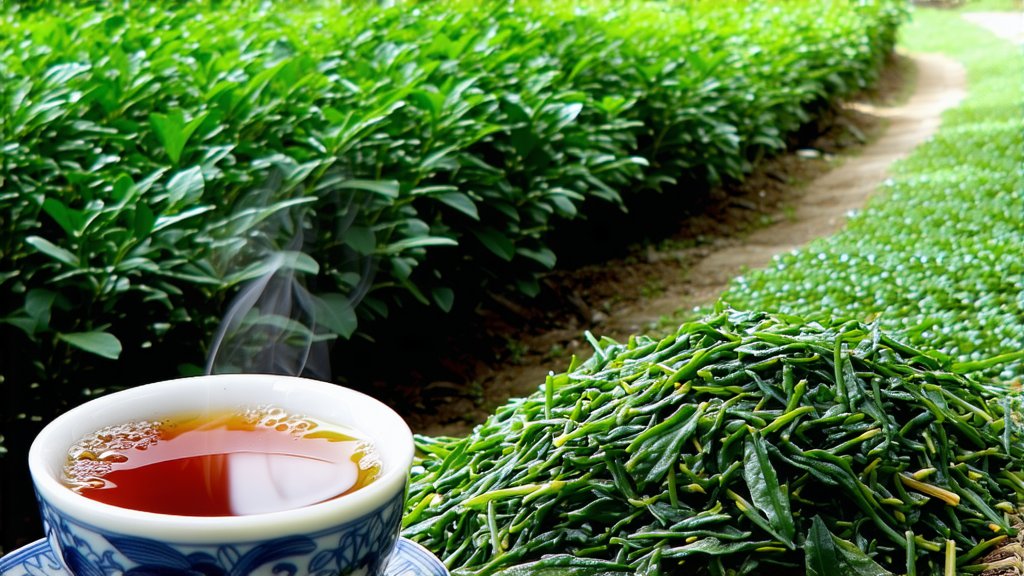
In the vast and diverse landscape of Chinese tea culture, few varieties stand as tall as Keemun Black Tea. Known for its rich flavor profile and captivating history, this exquisite tea has earned its place among the pantheon of fine teas from China. In this article, we will explore the origins, varieties, production process, and art of appreciating Keemun Black Tea, providing an in-depth look at this golden elixir from the heart of Anhui Province.
A Historical Perspective
Keemun Black Tea, named after the town of Qimen (Keemun in Pinyin) in Anhui Province, boasts a history that dates back to the Tang Dynasty (618-907 AD). However, it was during the Qing Dynasty (1644-1912 AD) that Keemun gained international recognition and became a staple in British tea culture. The tea's unique characteristics made it a favored choice among European nobility, contributing significantly to the global spread of Chinese tea.
Varieties of Keemun Black Tea
Keemun Black Tea is not a single entity but rather a category that encompasses several distinct sub-varieties, each with its own unique characteristics. The most notable ones include:
- Huang Shan Mao Feng: Often referred to as "Yellow Mountain Fur Peak," this variety is known for its slightly more robust flavor and fuller body compared to other Keemun teas.
- Xi Hong Pao: Also known as "Big Red Robe," this variety offers a more complex flavor profile with notes of smokiness and sweetness.
- Gong Mei: Meaning "Tribute Eyebrow," Gong Mei is characterized by its delicate, sweet, and floral notes.
Each variety of Keemun Black Tea provides a different sensory experience, making the exploration of this tea a journey through a spectrum of flavors and aromas.
The Art of Craftsmanship
The production of Keemun Black Tea involves a meticulous process that combines traditional methods and modern techniques to achieve the perfect balance of flavor, aroma, and appearance. Here’s an overview of the key steps involved:
- Plucking: The journey begins with the careful hand-picking of only the top one or two leaves and buds from the Camellia sinensis plant. This ensures that only the finest quality material is used in the production process.
- Withering: The freshly picked leaves are spread out in thin layers to wilt under the sun or in well-ventilated rooms. This step helps reduce moisture content and initiates the enzymatic reactions that contribute to the tea's flavor and aroma.
- Rolling: After withering, the leaves undergo rolling, which helps release the natural juices within the leaves and further breaks down cell walls. This step is crucial for developing the tea's characteristic shape and texture.
- Oxidation: The rolled leaves are then allowed to oxidize, a process that transforms the green leaves into their dark, rich hue. Oxidation develops the complex flavors and aromas that define Keemun Black Tea.
- Firing: Finally, the leaves are fired in ovens or over charcoal to halt oxidation and remove any remaining moisture. This step also imparts a unique smoky flavor to some varieties of Keemun Black Tea.
The Art of Tasting Keemun Black Tea
Tasting Keemun Black Tea is an experience that engages all the senses. Here’s a guide to help you appreciate this exquisite beverage:
- Visual Appreciation: Observe the dry leaves for their color and uniformity. High-quality Keemun Black Tea leaves should be consistent in size and exhibit a rich, dark hue.
- Aroma: Before brewing, take a moment to inhale the dry leaves. You should detect earthy, woody, and sometimes fruity or floral notes depending on the variety.
- Brewing: Use water just off the boil (around 90-95°C or 195-205°F) and steep for 3-5 minutes, depending on your taste preference. A shorter steep time yields a lighter, more refreshing brew, while a longer steep results in a bolder flavor.
- Tasting: As you take your first sip, notice the initial burst of flavor, followed by the mid-palate experience and the lingering finish. Look for complexity, smoothness, and balance. Common tasting notes include malt, caramel, stone fruit, and subtle smokiness.
- Mouthfeel: Pay attention to the texture of the tea in your mouth. A well-crafted Keemun Black Tea should feel smooth and velvety, with a pleasant astringency that refreshes the palate.
Conclusion
Keemun Black Tea is more than just a beverage; it is a testament to the rich heritage and artisanal skill that defines Chinese tea culture. From its storied history to its intricate production process and nuanced flavors, Keemun Black Tea offers a window into the soul of China’s tea tradition. Whether you are a seasoned tea connoisseur or a curious newcomer, exploring the world of tea, Keemun Black Tea promises an unforgettable experience that bridges cultures and epochs.